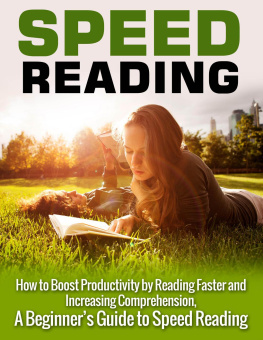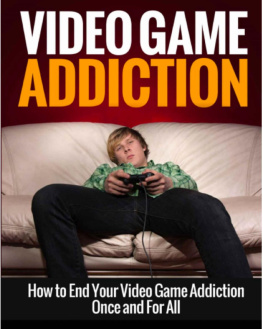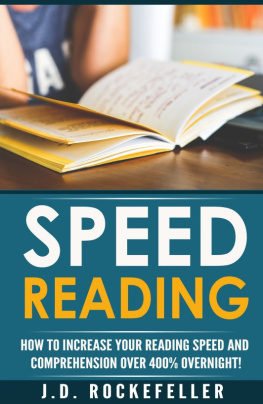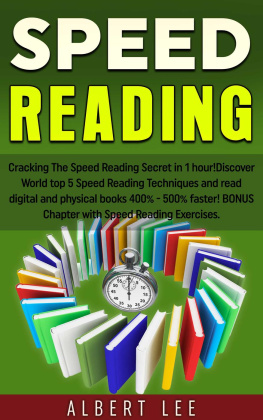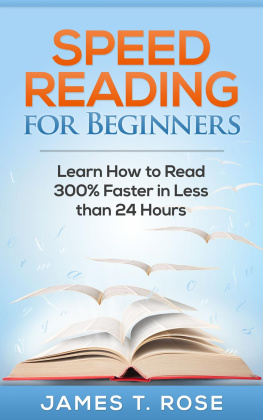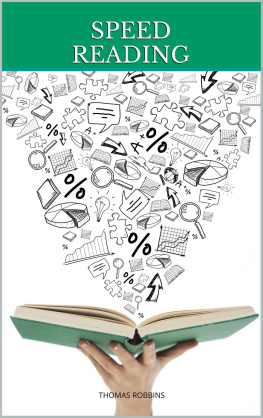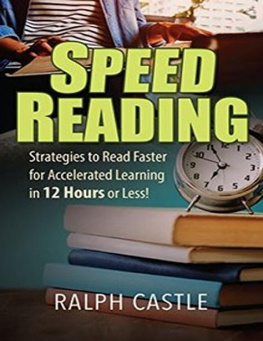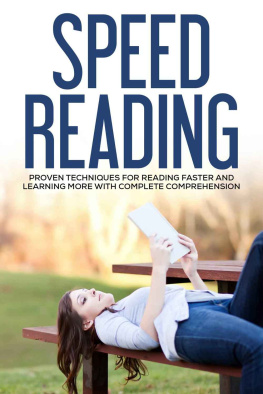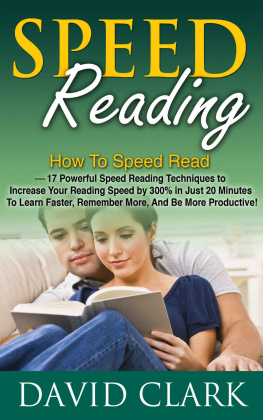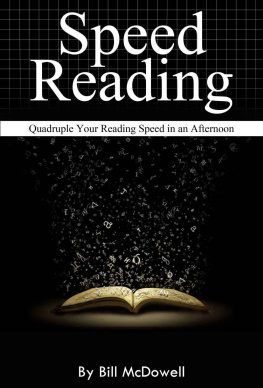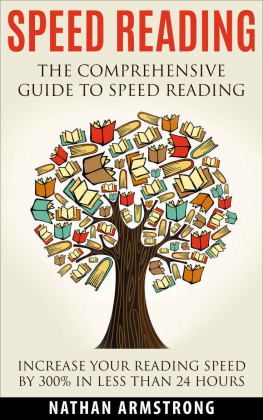Speed Reading
How to Boost Productivity by Reading Faster and Increasing Comprehension: A Beginners Guide to Speed Reading
While every precaution has been taken in the preparation of this book, the publisher assumes no responsibility for errors or omissions, or for damages resulting from the use of the information contained herein.
SPEED READING: HOW TO BOOST PRODUCTIVITY BY READING FASTER AND INCREASING COMPREHENSION: A BEGINNERS GUIDE TO SPEED READING
First edition. March 29, 2020.
Copyright 2020 Henry Lee.
Written by Henry Lee.
10 9 8 7 6 5 4 3 2 1
I ntroduction
Chapter 1 - What is Speed Reading?
Chapter 2 - Bad Reading Habits
Chapter 3 - How to Read Fast
Chapter 4 - The Road to Productivity
Chapter 5 - Test Your Skills
Chapter 6 - Your Own Reading Program
Conclusion
I want to thank you and congratulate you for downloading Speed Reading: How to Boost Productivity by Reading Faster and Increasing Comprehension: A Beginners Guide to Speed Reading.
In this book, you will understand why speed-reading is an essential skill in life, and why readers have to do away with vocalization and other old-school techniques they learned in the primary and intermediate grades. The chapters in this book are also especially organized into three main sections: 1) speed reading and studies about it; 2) various ways to increase ones reading rate and improve his comprehension; and 3) selected texts for reading practice and questions to help you understand what you read beyond the surface.
Not only will you become a better and faster reader after learning the techniques in this book, you will also gain confidence as you see your skills improve in just a short period of time.
Thanks again for downloading this book. I hope you enjoy it!
Chapter 1 - What is Speed Reading?
R eading is a fundamental part of ones existence. It is a skill that must be developed at a young age, lest the child grows up not knowing how to recognize symbols, how to combine the sounds of letters to form a new word, or worse, not knowing what an entire text means. Reading is not just a random activity taught in school. Rather, it helps people land a decent job, understand corporatese and legalese, and generally become respectable and more useful citizens.
Reading has several dimensions, two of which are the core lessons in this book. The first aspect is speed or the reading rate. Speed reading saves time. Imagine yourself poring over an advertisement for several minutes. You could read that in less than a minute. Ones reading rate says a lot about his comprehension, which also happens to be the second important factor in reading. If a child takes a lot of time reading, you could be sure that he is trying to make sense of the words. In the same manner, reading fast does not guarantee that one understands what he reads.
Speed and comprehension work together, and it is the purpose of this book to explore these skills. Some exercises in this book require a timer and within the period, you should have read and understood the given texts. Moreover, you should have been able to answer items pertaining to the text to check if you retained the information.
To read fast, one must scan the words from left to right, and read the entire text from top to bottom. However, some people do have the ability to read words at a glance, and not one word at a time, unless the material is not within the scope of their expertise, or the material contains too many crucial information that should be digested little by little. A fast and good reader can read more than eight words at a glance and can scan the entire text horizontally and vertically for him to get the gist of the material.
In the elementary grades, you were taught to vocalize what you read. The sound of the words made you retain and understand what you are reading. It does work, except that you could become slow readers once you get accustomed to it. The act of saying the words aloud add to the effort you make when you read. This also involves listening to what you read aloud. Ones comprehension becomes limited if he reads word-for-word.
Slow reading also gives other readers the illusion that they are reading better. Its because they think they are digesting a difficult material, processing it, and eventually reaching a Eureka moment where they finally realize what they had just read. Slow reading also leads to regression, where some readers review or reread a material. All people go through a Wait, let me check that again phase when they read something, especially if the information is unfamiliar to them.
You dont just jump from one paragraph to another. However, doing that every single time is not good news. It is a sign that your reading rate has not increased, and your comprehension has fossilized in a certain level, regardless of your age or educational attainment.
In a remedial reading class for adults, the students were asked to read a text about five paragraphs long for three minutes. When the alarm buzzed, the teacher asked the students to close their workbooks and answer her questions based on what they remembered from the story. Ten out of 20 could not even recall the name of the lead character! Ironically, they remembered what the character did. Their recollection of events was not really great, but they managed to tell a few major events.
Why did they forget the name of the protagonist, which should actually be the first thing that they would remember? It turned out that the students concentrated on the events, as they imagined the scenes unfolding like a television show. However, they failed to concentrate on other important details like names. Given that three minutes is enough for adult readers, the class displayed poor reading skills.
Another problem that besets poor readers is the lack of sufficient vocabulary. Once a reader encounters an unfamiliar word that he couldnt decipher through context clues, he would immediately consult the dictionary to facilitate his reading. That is alright, as long as the process does not interfere with reading. Some readers take too much time looking for a word that they fail to make connections between the newly discovered meanings and where they fit in the text.
Next page
